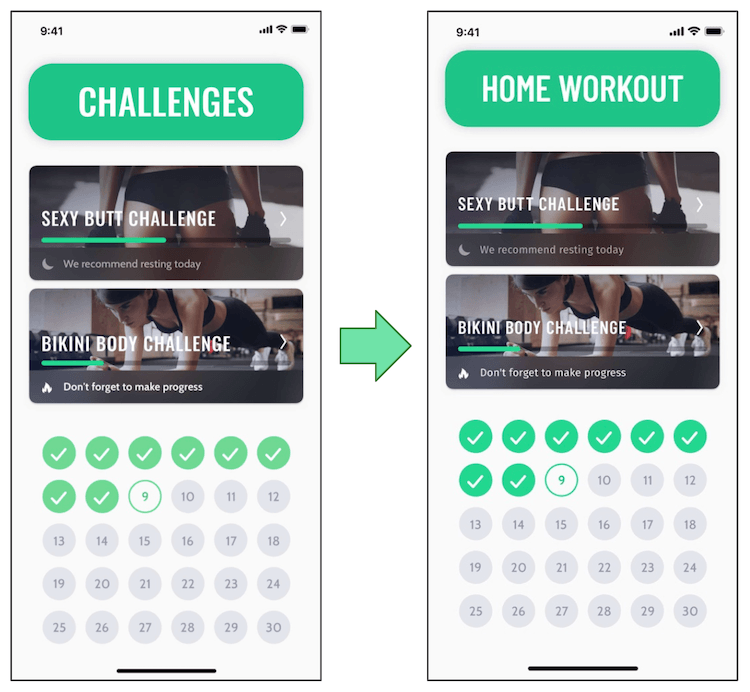
When assessing typical trends year over year, 2020 was an outlier to say the least. With people’s day to day lifestyles changing significantly, previous trends in user behavior showed significant changes as well – from the rise in popularity of work-from-home conferencing or e-learning, to mobile shopping and delivery, to home fitness and meditation.
Though user behavior changed in 2020 and will continue to do so in 2021, the foundational elements of a proper App Store Optimization (ASO) strategy remain constant. While some factors are outside of a marketer’s direct control, such as global trends in working from home or in-store shopping, the core elements of a successful App Store Optimization strategy can and should be regularly updated. A key component of organic ASO is assessing performance and launching updates based on observed trends, whether they be from external or internal factors.
Keyword Optimization
Keyword optimization remains the starting point for an App Store Optimization strategy. This has always required an understanding of which keywords are relevant for the app you are trying to optimize, which terms have high search volume in the mobile app stores, who the top competitors are and how they are trending. Targeting the right keywords can increase search visibility in the app stores, leading to more potential new users.
Many apps and businesses have seasonal times of increased interest. Some of these remained consistent in 2020, while others, such as back to school or vacation booking, simply could not fall on the same time of year they had previously. It’s always important to plan to capitalize on seasonality where possible, but it is also important to constantly assess trends in the app stores to see what user behavior and search interest looks like and pivot where needed.
Targeting the right keywords at the right time has always been a vital part of ASO. Using the store-shifting changes of 2020 as an example, it will be more important than ever to prepare to be discovered in search for the next ‘new normal’, the one after that, and the one after that, when the time comes and user search interest changes.
Conversion and Creative Optimization
Once your app is found, whether from search or other areas of discovery, users will have to decide whether or not to download your app. While 2020 saw many changes in user behavior and experience, the visible assets on the store listing influencing their decision to download was not one of them.
Creative sets, including the app icon, screenshots and videos have a big impact on a user’s decision to download. A similar strategy to analyzing keyword interest and top competitors is important here – understanding what new trends are emerging and what elements you can test out in your app.
As an example, the app 30 Day Fitness shifted the text of its first screenshot from “Challenges” to “Home Workouts” in Q2 2020. This change came in-line with changes in user behavior and search interest around the same time. The app moved from ranking #19 in its category on March 1st to #3 on April 1st, indicative of an increase in its daily downloads.
30 Day Fitness changed the text in their first screenshot to focus on Home Fitness based on changes in user behavior and search trends.
Creative sets should always be tested through strategies such as Google Play Experiments or Apple Search Ads creative sets before being applied fully. However, the decisions to make these changes for testing should be driven by what search terms are trending and how users are behaving – being knowledgeable about what these are and how they may shift in 2021 will be critical to success throughout the year.
Iteration
Along with keyword and creative optimization, iteration has been and remains a cornerstone of App Store Optimization. Iteration requires analyzing what specifically was deployed, how it performed before and after the update, and how to further improve upon what is working.
Though 2020 was the most extreme, globally sweeping example of how user behaviors can change and marketing strategies must change with it, this can happen in any industry at any time. When iterating, it’s important to keep in mind past performance of the app, what can be capitalized on for seasonal trends, and what new developments in user behavior need to be addressed in upcoming updates.
The success – or lack of it – of a marketing strategy can come from understanding trends, targeting the right keywords and emphasizing the right features in creative sets. It sounds simple enough, but must be thoroughly researched and analyzed, then executed properly and in a timely manner to be successful. Without using proper ASO software to quickly understand changing trends in what terms have high search volume, what competitors are doing in creative sets and which apps are rising in popularity, it will not be possible to maintain performance, get ahead of the next trend and prepare for the one after that.
Supplementing Organic with Paid User Acquisition
Supplementing these organic efforts for search visibility and conversion with paid user acquisition is another important part of a successful App Store Optimization strategy. The same concepts apply here, where a knowledge of trends key metrics on various campaigns such as impressions, conversions and CPI must be regularly tested and iterated on for maximum performance.
Running paid campaigns from channels that directly impact search in the app stores, such as Apple Search Ads or Google Ads, can help contribute to organics as well – this has been true before 2020, during 2020 and has no sign of changing. If a campaign converts to a tap or download, signaling that a user found the app relevant for a search query, these campaigns can benefit your organics just as they would if the user came through from organic search. In this way, your paid campaigns can supplement your organic optimization efforts, and an understanding of which keywords perform best organically can help guide your strategy for paid UA efforts. It has always been important to keep a close eye on how metrics trend for campaigns and to iterate, but was especially in 2020 with the seismic shifts in user behavior and will continue to be so in 2021.
Conclusion
People and organizations worldwide had to make significant adaptations to their behavior in 2020. This brought big changes to the app store ecosystem, but at its core a basic concept remained unchanged: these people are still looking for apps, and these organizations still want their apps to be discovered. The strategies behind how to connect users with apps and get them to convert are also basic concepts that remain unchanged.
While this has always happened in varying degrees across different industries and categories in the app stores, 2020 exemplified how quickly trends can change. In 2021, it will be critical to be on top of assessing performance, understanding user behavior and launching the right updates at the right time to stay ahead of the trends, whatever they may be.











